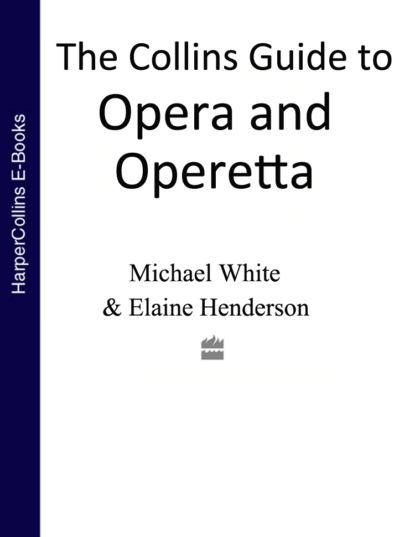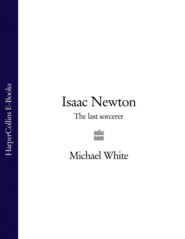По всем вопросам обращайтесь на: info@litportal.ru
(©) 2003-2024.
✖
The Collins Guide To Opera And Operetta
Автор
Год написания книги
2018
Настройки чтения
Размер шрифта
Высота строк
Поля
Francois Le Roux, John Tomlinson, Marie Angel, Royal Opera, Covent Garden/Elgar Howarth. Collins Classics 7041-2. The only recording, taken live from the Covent Garden performances.
Punch and Judy (#ulink_7b38da83-d99d-5d19-a7d6-ca3db6db6f59)
FORM: Opera in one act; in English
COMPOSER: Harrison Birtwistle (1934– )
LIBRETTO: Stephen Pruslin
FIRST PERFORMANCE: Aldeburgh, 8 June 1968
Principal Characters
Punch
High baritone
Judy/Fortune Teller
Mezzo-soprano
Pretty Polly/Witch
High soprano
Choregos/Jack Ketch
Baritone
Lawyer
High tenor
Doctor
Deep bass
Note:Punch and Judy takes the form of a prologue, four scenes and an epilogue, during which a violent re-enactment of the traditional Punch and Judy puppet story takes place.
Synopsis of the Plot
PROLOGUE The Choregos welcomes the audience.
SCENE 1 Punch rocks the baby and sings it a somewhat threatening lullaby before tossing it on the fire. When Judy comes in, Punch leads her to the Altar of Murder where he stabs her before the Choregos takes her to the gibbet. Punch then sets off on Horsey to find Pretty Polly, whom he discovers sitting on a pedestal under a green spotlight. Punch serenades Polly and presents her with a huge sunflower, but she is unimpressed, especially as the sunflower is damaged by the fire in which the baby died.
SCENE 2 Punch is confronted with his crime by the Lawyer and the Doctor. But Punch is too clever for them and leads them both to the Altar of Murder where he stabs the Doctor with a gigantic syringe and the Lawyer with a quill pen. They are both taken to the gibbet and Punch resumes his search for Pretty Polly. This time he finds her under a red spotlight, but again she refuses his gift, a jewel, because it is tainted by the suffering of Punch’s victims.
SCENE 3 The Choregos enters into the action and confronts Punch, but he, too, must die – sawn to death inside a double bass case. The death of the Choregos precipitates Punch into a nightmare, at the end of which he is beaten and taunted as he is confronted with his crimes. Resuming his search, Punch finds Pretty Polly’s pedestal, empty, under a blue spotlight.
SCENE 4 Punch is imprisoned and under sentence of death, but he tricks the Choregos, disguised as Jack Ketch, the hangman, into putting his own head into the noose. For this unintentional good deed Punch is reunited with Pretty Polly (bathed in white light), the gallows is transformed into a maypole and everyone (except the Choregos) is happy.
EPILOGUE The Choregos brings the proceedings to a close.
Music and Background
Punch and Judy tells a violently anarchic story in terms of the stylised ritual order of ancient Greek drama – hence the presence of a ‘Choregos’ (i.e. the Punch and Judy man) to present and stage-manage the action. All the music comes in self-contained, sometimes extremely short numbers strung together in the manner of Baroque opera and oratorio, with Bach’s St Matthew Passion as an admitted model. But the ultimate sound world of Punch and Judy is abrasively remote from Bach, with the small, on-stage band of just fifteen instruments often screaming shrilly at the far extremities of their pitch. Determined listeners appreciate its brilliant game-like invention and the sheer energy with which Birtwistle batters their ears.
Highlights
Hard to say, except that you need to catch onto the repeating patterns and sequences that work like aural signposts through the score. And there are windows of lyricism, as well as the relief of genuine jokes.
Did You Know?
At Punch and Judy’s first performance, in the 1968 Aldeburgh Festival, Benjamin Britten and Peter Pears famously walked out.
Recommended Recording
Phyllis Bryn-Julson, Jan de Gaetani, Philip Langridge, Stephen Roberts, London Sinfonietta/David Atherton. Decca Headline HEAD 24/5.
Georges Bizet (#ulink_840526bb-3765-5100-a3aa-edee956bdbae)
(1838–75)
LaMaison du Docteur (1855)
Le Docteur Miracle (1857)
Don Procopio (1859)
Ivan IV (1863)
Les Pêcheurs de Perles (1863)
La Jolie Fille de Perth (1867)
Djamileh (1872)
Carmen (1875)
Bizet’s short life – he died at thirty-six – was beset by disasters, disappointments, self-destroyed scores and abandoned projects, and although he wrote one of the most celebrated operas in the history of the medium, he never lived to see the measure of Carmen’s success. His interest in opera began early, while he was still studying in Paris with Halévy and (privately but influentially) Gounod, and his first stage works were more Italianate than French, modelled after Donizetti and Rossini. Later scores attracted the criticism that they were ‘Wagnerian’, although it’s hard to see why. Apart from Carmen, only one other opera, Les Pêcheurs de Perles, has survived in repertory, along with a mere handful of concert scores, including the youthful Symphony in C (which must be one of the most effective things ever written by a teenager), the suite of incidental music to the play L’Arlésienne, and the piano pieces Jeux d’Enfants.
Carmen (#ulink_8b66dced-4ebb-553f-8c7b-f30e04a1e722)
FORM: Opera in four acts; in French
COMPOSER: Georges Bizet (1838–75)
LIBRETTO: H. Meilhac and L. Halévy; after Prosper Mérimée’s story









